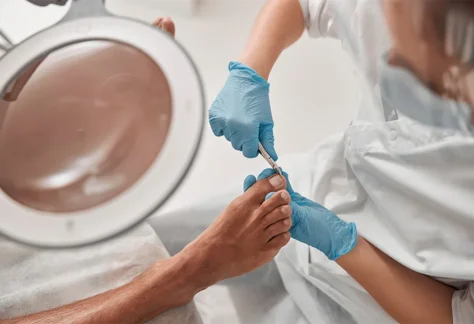In This Article:
- Pay attention to your coronavirus signs and symptoms to determine whether you need to go to the hospital. Emergency symptoms include trouble breathing, chest pressure, confusion, pale skin and the inability to stay awake.
- What happens when you go to the hospital largely depends on the severity of your symptoms. Some patients require minimal intervention, while others need ventilators to help them breathe.
- Although there is no cure, treatment may include antivirals, steroids, antibiotics or convalescent plasma, among many other methods.
When Should You Seek Hospital Care?
Ideally, you will be able to monitor your symptoms from home as you stay in quarantine. However, if you or a loved one experiences severe warning signs, call the Emergency Department immediately and let them know you are seeking care for someone who has COVID-19.
Here are some life-threatening coronavirus signs and symptoms to watch for:
- Trouble breathing
- Persistent pain or pressure in the chest
- New confusion
- Inability to stay awake
- Pale, gray or blue skin, lips or nail beds
What Happens When You Get To the Hospital?
At this point, most hospitals have varying levels of COVID-care units. Where you are placed depends on the severity of your symptoms. Whether you have a relatively mild case or are on the verge of ventilation, expect to feel isolated. The only people you interact with will be covered head to toe in masks, gowns and bulky, protective medical equipment.
Patients with non-life-threatening cases can expect minimal intervention. The care team will routinely check vitals, oxygen and hydration levels and adjust the treatment accordingly. If the oxygen levels fall slightly short, the doctor may utilize an oxygen mask or a nasal cannula, which delivers oxygen through two prongs placed under the nose. If you’re lucky, this will be enough to lead you toward gradual recovery.
What if Your Symptoms Worsen?
If the treatments mentioned above don’t work, you’ll be transferred to the ICU (intensive care unit), so your health care team can closely monitor your coronavirus signs and symptoms. At this stage, patients usually have severe blood pressure, breathing problems and their vitals are rapidly declining.
Intubation is the next step for patients who can’t breathe on their own. A doctor and team will come to your bed and sedate you via IV. Then, they will slide a tube down through your throat, connect it to your lungs and hook the tube up to a breathing machine. While you’re still mostly unconscious, the doctor will choose the right ventilator level for your needs.
Once awake, you will be consistently evaluated through chest X-rays and vital tests. If or when you start to improve, the doctors will perform a spontaneous breathing test, or SBT, to measure your ability to breathe on your own. If you pass, the breathing tube will be removed so you can begin your road to recovery. If not, death may be on the horizon.
For some patients, their heart stops, the doctors try to perform CPR, and they usually die. Other times, it’s evident that the life-saving measures aren’t working. So, the care team will look at the patient’s advance health care directive. If they do not want to be kept alive on machines, the team will take out the breathing tube, provide medications for comfort and allow the individual to pass in peace.
Keep in mind that even if you do eventually regain physical strength, many ICU survivors experience PTSD from the loneliness, pain and life-threatening shortness of breath.
What Are the Typical Treatment Methods?
Although the general patient experience has remained consistent from the start of the pandemic, doctors will adjust your exact treatment plan as new information becomes available. Since there is no true cure for the virus, your care team’s biggest focus will be preserving your vital organs and monitoring your coronavirus signs and symptoms through certain medications. You may be treated with the following and many more:
Antibiotics: Although antibiotics are used to kill bacteria rather than viruses, some antibiotics like azithromycin have antiviral properties that can reduce the overall strain on your body. Some COVID-19 patients are also prone to bacterial infections, which can be prevented with azithromycin.
Steroids: An Oxford University study concluded that a readily available steroid called dexamethasone resulted in 30% fewer deaths for ventilator patients and 20% fewer deaths for patients receiving supplemental oxygen. The drug had no effect on less-critical patients who did not require either treatment.
Antiviral Drugs: Remdesivir (Veklury) is an antiviral drug that was proven to kill COVID-19 under experimental conditions. It was approved in October 2021 for human use in hospitalized patients 12 and older. Study evidence has shown that remdesivir was far superior to the placebo in shortening recovery time, and it also reduced the risk of lower respiratory tract infections.
Convalescent Plasma: In some cases, the FDA has authorized doctors to transfer convalescent plasma from the blood of recovered COVID-19 patients to sick patients through an IV. So far, there is no conclusive evidence that convalescent therapy is more effective than the standard care plan.
After the Hospital
Some patients leave the hospital and slowly resume their normal life. For others, this is not the case. There have already been several recovered patients who have been readmitted to the ICU for long-term effects on their heart, liver, lungs and other vital organs. Those who aren’t as fortunate will become one of the more than 700,000 individuals in the United States who have lost their lives due to COVID-19.
This POV experience isn’t intended to scare you but rather show you what happens when you go to the hospital for COVID-19 and remind you that this trauma is mostly preventable. In Arizona, more than 94% of all hospital patients are unvaccinated against the virus. The pandemic isn’t over yet, so get your vaccine, wear a mask and stay socially distanced to avoid COVID-19 and its consequences.
Sources:
- https://www.nejm.org/doi/full/10.1056/nejmoa2007764
- https://www.healthgrades.com/right-care/coronavirus/how-hospitals-treat-covid-19-patients
- https://www.healthgrades.com/right-care/coronavirus/what-to-know-about-covid-19-plasma-therapy
- https://valleywisehealth.org/services/emergency-and-trauma/
- https://www.cdc.gov/coronavirus/2019-ncov/if-you-are-sick/steps-when-sick.html#warning-signs
- https://www.ox.ac.uk/news/2020-06-16-dexamethasone-reduces-death-hospitalised-patients-severe-respiratory-complications
- https://www.aarp.org/health/conditions-treatments/info-2020/coronavirus-hospitalization-treatment.html
- https://www.who.int/emergencies/diseases/novel-coronavirus-2019/media-resources/science-in-5/episode-47—post-covid-19-condition?gclid=CjwKCAjw2P-KBhByEiwADBYWChi5mY_wk9NeFPKGRB3DoGsj5vNMYHhqaD4GvgAsCP20uEgOZh7FYxoCBfIQAvD_BwE
- https://www.azdhs.gov/preparedness/epidemiology-disease-control/infectious-disease-epidemiology/index.php?utm_source=google_grant&utm_medium=cpc&utm_campaign=covid19&utm_term=covid#novel-coronavirus-home
- https://www.google.com/search?q=covid+ptsd&oq=covid+ptsd&aqs=chrome..69i57j0i20i263i512l2j0i512l7.1375j0j4&sourceid=chrome&ie=UTF-8







